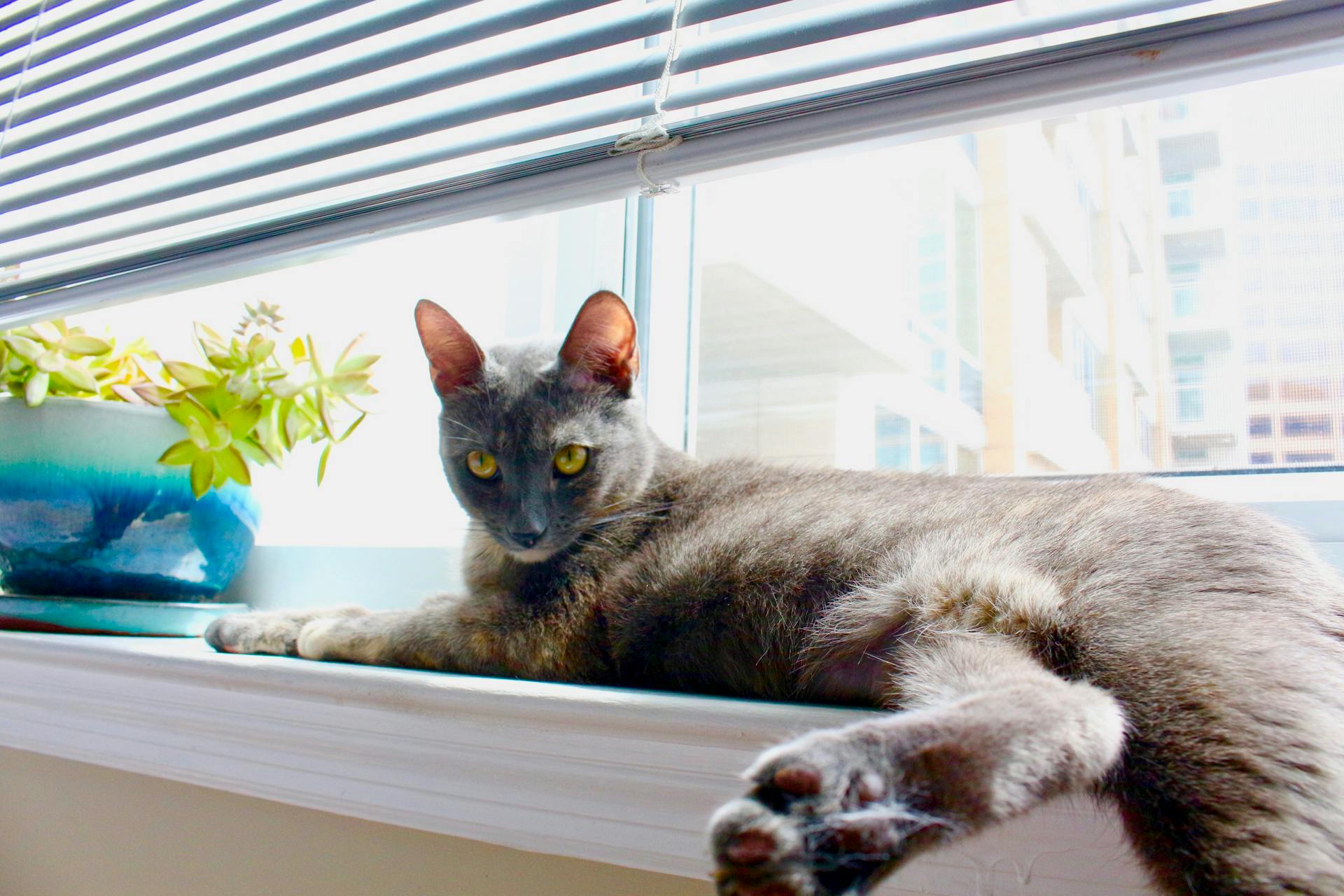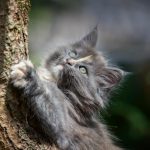As more people return to work, many cats are experiencing separation anxiety for the first time. This shift can lead to stress and behavioral problems for our feline friends. Understanding their needs is essential. Recognizing signs of anxiety and implementing effective management strategies can help ease the transition for both you and your cat. Explore practical tips to support your pet and ensure a smoother adjustment to this new routine.
Understanding Cat Separation Anxiety
Cat separation anxiety is a condition where cats experience distress when left alone. This can be due to various factors, including changes in their environment or routine. Cats are creatures of habit, and disruptions can lead to anxiety.
Avez-vous vu cela : Ultimate Guide to Caring for Cats with Feline Lower Urinary Tract Disease (FLUTD): Tips for Optimal Wellness
Symptoms to Identify
Recognizing the symptoms of cat separation anxiety is crucial. Common signs include excessive meowing, destructive behavior, and inappropriate urination. Cats may also become overly clingy or show changes in appetite. Observing these behaviors can help in identifying anxiety early, allowing for timely intervention.
Impact of the Pandemic on Feline Behavior
The pandemic has significantly influenced feline behavior. Many cats became accustomed to having their owners at home, leading to increased attachment. As routines shift back to normal, some cats may struggle with being left alone again, exacerbating separation anxiety.
A lire aussi : Transforming Your Home for a Visually Impaired Cat: Safety Tips and Environmental Modifications
Understanding these factors can help in managing and alleviating cat separation anxiety. By being aware of the symptoms and the potential impacts of environmental changes, cat owners can take proactive steps to ensure their pets remain comfortable and stress-free.
Recognizing the Signs of Distress
Understanding the signs of distress in cats is essential for addressing separation anxiety. Cats communicate their discomfort through various emotional signals and changes in behavior.
Physical Signs of Anxiety
Physical indicators of anxiety in cats can be subtle yet telling. Look for signs such as dilated pupils, rapid breathing, or excessive grooming. These signs often accompany stress and indicate your cat might be experiencing anxiety.
Behavioral Changes to Watch For
Changes in cat behavior can provide clues to their emotional state. A normally playful cat might become withdrawn, hiding more than usual. Conversely, a typically independent feline might become overly clingy, following you from room to room. These shifts in behavior are crucial signals of distress.
Vocalizations as Emotional Signals
Vocalizations play a significant role in expressing distress. Cats may exhibit excessive meowing or yowling when anxious. These vocal cues are their way of communicating unease and should not be ignored. Listening to and interpreting these sounds can help in identifying and addressing their anxiety.
By recognizing these signs, cat owners can take proactive steps to alleviate their pet’s distress, ensuring a more comfortable and stress-free environment.
Strategies for Managing Cat Separation Anxiety
Helping your cat cope with separation anxiety involves implementing effective management techniques and coping strategies. Establishing a stable routine is vital. Cats thrive on consistency, so maintaining regular feeding, play, and rest times can ease transitions and reduce anxiety.
Routine Adjustment
Adjusting your cat’s routine gradually prepares them for changes. Start by leaving the house for short periods, gradually increasing the duration. This gradual desensitization technique helps your cat become accustomed to being alone, minimising stress.
Interactive Play and Mental Stimulation
Interactive play is crucial for managing anxiety. Engage your cat with toys that stimulate their hunting instincts, such as feather wands or laser pointers. These activities provide mental stimulation, keeping your cat entertained and reducing anxiety levels. Additionally, puzzle toys can offer both mental and physical engagement, promoting a sense of accomplishment.
Creating a Safe Environment
Ensure your cat has a safe space to retreat to when feeling anxious. This could be a quiet room with their favourite blanket or a perch by the window. Providing a comforting environment helps your cat feel secure and can alleviate anxiety symptoms.
By implementing these strategies, you can effectively manage your cat’s separation anxiety, promoting a happier and healthier pet.
Behavioral Training Techniques
In addressing cat separation anxiety, training methods play a pivotal role. Implementing effective techniques can significantly reduce anxiety and promote a sense of security in your feline friend.
Effective Training Techniques for Reducing Anxiety
Begin with behavioral modification strategies that focus on reducing anxiety triggers. Gradual exposure to being alone can help your cat adjust. Start by leaving them for short periods, slowly increasing the time as they become more comfortable. This technique helps in building their confidence and independence.
Using Positive Reinforcement to Encourage Independence
Positive reinforcement is essential in encouraging desired behaviors. Reward your cat with treats or affection when they remain calm during your absence. This approach not only reinforces good behavior but also strengthens the bond between you and your pet. It’s crucial to be patient and consistent, as changes in behavior take time.
The Role of Consistency in Behavior Modification
Consistency is key in behavior modification. Establish a routine that your cat can rely on, as predictability reduces stress. Ensure that training sessions occur at the same time daily, reinforcing stability. Over time, your cat will learn to associate these routines with safety, helping to alleviate anxiety.
Environmental Enrichment for Cats
Creating a stimulating environment is crucial for your cat’s mental health, especially when addressing separation anxiety. Cats are intelligent creatures that thrive on mental stimulation and physical activity. Providing an enriched environment can significantly reduce stress and anxiety levels.
Recommended Toys and Activities
To keep your cat engaged, incorporate a variety of toys and activities that cater to their natural instincts. Toys that simulate hunting, such as feather wands or laser pointers, are excellent choices. These not only provide physical exercise but also offer mental stimulation. Puzzle toys, which reward your cat with treats, can also be a great way to keep them occupied and mentally engaged.
Creating Safe Spaces
During your absence, ensure your cat has safe spaces to retreat to. This could be a cozy corner with their favourite blanket or a perch by the window where they can watch the outside world. These spaces offer comfort and security, helping to alleviate anxiety. By combining toys, activities, and safe spaces, you can create a nurturing environment that supports your cat’s well-being and reduces separation anxiety.
The Role of Technology in Managing Anxiety
Incorporating technology solutions into pet care can significantly aid in managing cat separation anxiety. With advancements in pet monitoring devices, owners can now keep a watchful eye on their feline companions even when away from home.
Overview of Pet Monitoring Devices
Pet monitoring devices, such as cameras, offer real-time insights into your cat’s behaviour. These devices allow you to observe your pet’s activities and identify any anxiety-related issues. By understanding their behaviour patterns, you can make informed decisions to improve their well-being.
Apps for Tracking Cat Behaviour
Various apps are designed to help track your cat’s behaviour and anxiety levels. These applications can log changes in activity, eating habits, and vocalisations, providing a comprehensive overview of your cat’s emotional state. By regularly reviewing this data, you can detect trends and address potential anxiety triggers.
Using Cameras During Work Hours
Installing cameras at home allows you to check in on your cat during work hours. This not only provides peace of mind but also helps in identifying any distress signals your cat might exhibit when alone. By leveraging technology, you can create a more supportive environment for your pet, reducing anxiety and promoting a sense of security.
Seeking Professional Help
When dealing with cat separation anxiety, seeking veterinary advice is often a crucial step. A veterinarian can rule out any underlying medical conditions that might be contributing to your cat’s anxiety. They can also provide guidance on whether medication or supplements might be beneficial for your pet.
The Role of Animal Behaviorists
Animal behaviorists play a significant role in addressing separation anxiety. These professionals specialise in understanding feline behaviour and can develop customised strategies to alleviate anxiety. They assess the specific triggers and responses of your cat, creating a tailored plan that includes behavioural modification techniques.
Resources for Finding Qualified Trainers
Finding the right professional help can make a significant difference. Look for behaviourists or trainers who are certified and have experience with feline anxiety. Resources such as veterinary clinics or pet care organisations often provide referrals to qualified professionals. Additionally, online platforms may offer directories of certified trainers specialising in feline behaviour.
Consulting with a veterinarian or behaviourist ensures that your cat receives comprehensive care tailored to their needs. By leveraging professional expertise, you can effectively manage and reduce your cat’s separation anxiety, fostering a healthier and more balanced environment for your pet.
Emotional Support for Pet Owners
Caring for a pet with separation anxiety can be emotionally taxing. It’s essential for pet owners to prioritise their own emotional well-being. Engaging in self-care activities helps maintain a balanced life, ensuring you’re equipped to support your furry friend. Simple practices like taking breaks, exercising, or enjoying a hobby can significantly reduce stress levels.
Support Groups and Community Resources
Connecting with others who understand the challenges of pet ownership can be incredibly beneficial. Support groups offer a platform to share experiences, exchange advice, and gain reassurance. These groups can be found locally or online, providing a sense of community and understanding. Participating in these groups can alleviate feelings of isolation and provide practical solutions to common issues.
Online Resources and Communities
The internet is a treasure trove of resources for pet owners seeking emotional support. Numerous online communities cater to pet owners, offering forums, articles, and expert advice. These platforms allow you to connect with others, access valuable information, and receive ongoing assistance. By leveraging these resources, pet owners can better manage their emotional well-being while caring for their beloved pets.
Recommended Products for Managing Anxiety
When it comes to managing separation anxiety in cats, various pet products can provide relief and comfort. These items are designed to create a calming environment, helping to reduce stress levels in anxious pets.
Overview of Calming Products
The market offers a range of calming products specifically for pets. These include pheromone diffusers, sprays, anxiety wraps, and specially designed beds. Each product aims to provide comfort and reduce anxiety symptoms, making them valuable tools for pet owners.
Benefits of Pheromone Diffusers and Sprays
Pheromone diffusers and sprays are popular anxiety relief solutions. They release synthetic pheromones that mimic those naturally produced by cats, promoting a sense of security and calm. These products can be particularly effective in soothing cats during stressful situations, such as being left alone.
Evaluating the Effectiveness of Anxiety Wraps and Beds
Anxiety wraps and beds offer additional comfort items for stressed pets. Wraps provide gentle pressure, similar to swaddling, which can have a calming effect. Specialized beds, often with enclosed designs, offer a secure space for cats to retreat. Evaluating their effectiveness involves observing changes in your cat’s behaviour, ensuring these products meet their specific needs.
















